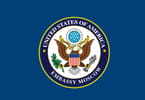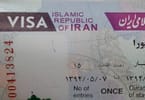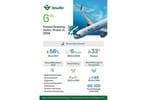By authorizing the EU Commission to negotiate with the US an agreement lifting the EU’s time restrictions on ‘wet-leasing’ for US carriers, the Council of Ministers started a process that risks harming Europe’s aviation business and employment. The EU-US bilateral agreement would effectively remove the EU’s current 7-month duration limit for US wet-lease operators and any notion of ‘seasonal capacity needs’ or ‘overcoming operational difficulties’. While wet-leasing – i.e. leasing an aircraft with crew – is a tool to give airlines flexibility to meet unexpected, seasonal or urgent operational demand, such an EU-US deal would not only risk to distort competition on the Transatlantic routes but also entail a harmful ‘ripple effect’ resulting in similar deals for air carriers from Asia or the Gulf region.
Under significant pressure from the US – which recently started to question the EU’s long-standing 7-months limitation (renewable once = 14 months) for wet-leasing into Europe – the EU Commission had asked and finally obtained a negotiating mandate to open up Europe’s lucrative wet-leasing market for US operators.
“This might turn out to become a big mistake”, says Capt. Dirk Polloczek, ECA President. “We have not seen any evidence for a real and substantial economic interest for Europe to open its market. No cost-benefit and impact assessment has been carried out that could justify such a decision. In fact, it could come back like a boomerang.”
“The risk of distorting competition on the Transatlantic market cannot be under-estimated” says Polloczek. “In the US, any wet-leasing application from an EU operator can unilaterally be denied if it fails a ‘Public Interest Test’. But in Europe, no such tool is available – and this simple fact already tilts the scales in favour of the US. It is of little relief that – until now – the US did not use this ‘Public Interest Test’. The new US Administration already demonstrated its new approach to politics: “Buy American, Hire American” is a good preview of what might come up in aviation very soon. And wet-leasing will be no exception.”
Moreover, while this mandate covers only the EU-US market, the threat of unlimited wet-leasing spreading to other countries and regions is real.
“It is hard to imagine that other countries will not ask for a similar arrangement”, says Philip von Schöppenthau, ECA Secretary General. “Especially, now that the Commission is negotiating Air Transport Agreements with the Gulf and Asian countries, the appetite for such a deal would be great. The Commission’s ability to say “No” is by no means certain. Undoubtedly, there will be a ripple ‘effect.”
Wet-leasing is a necessary tool, essential in modern day operations to allow flexible capacity to be brought into an airline for specific operational or seasonal needs of a limited duration.
“The problem is that when time limitations and seasonality requirements are being dropped for third country operators, wet-leasing will become a permanent feature of airlines’ business models,” says von Schöppenthau. “And when it becomes permanent, any growth of an EU airline will be satisfied through aircraft and crew from third countries, rather than through European wet-lease operators and European crews.
That way, market growth and employment are exported abroad. And: it opens the gate to abuse: ‘virtual airlines’ – owning only one or two aircraft, while wet-leasing many others from non-EU countries – will have a fertile ground to spread. This will bring challenges for oversight and risks of social dumping, for example by using cheap crews from third countries in Asia, rather than European ones.”
ECA is convinced that any changes to the EU’s wet-leasing regime must proceed hand in hand with the creation of a strong legal framework aimed at guaranteeing that the rights of all the European parties involved are adequately protected. This includes passengers (right to travel safely), the carriers (right to operate their business and make profit) and the European crews (right to keep their jobs).
WHAT TO TAKE AWAY FROM THIS ARTICLE:
- leasing an aircraft with crew – is a tool to give airlines flexibility to meet unexpected, seasonal or urgent operational demand, such an EU-US deal would not only risk to distort competition on the Transatlantic routes but also entail a harmful ‘ripple effect' resulting in similar deals for air carriers from Asia or the Gulf region.
- Under significant pressure from the US – which recently started to question the EU's long-standing 7-months limitation (renewable once = 14 months) for wet-leasing into Europe – the EU Commission had asked and finally obtained a negotiating mandate to open up Europe's lucrative wet-leasing market for US operators.
- ECA is convinced that any changes to the EU's wet-leasing regime must proceed hand in hand with the creation of a strong legal framework aimed at guaranteeing that the rights of all the European parties involved are adequately protected.






















